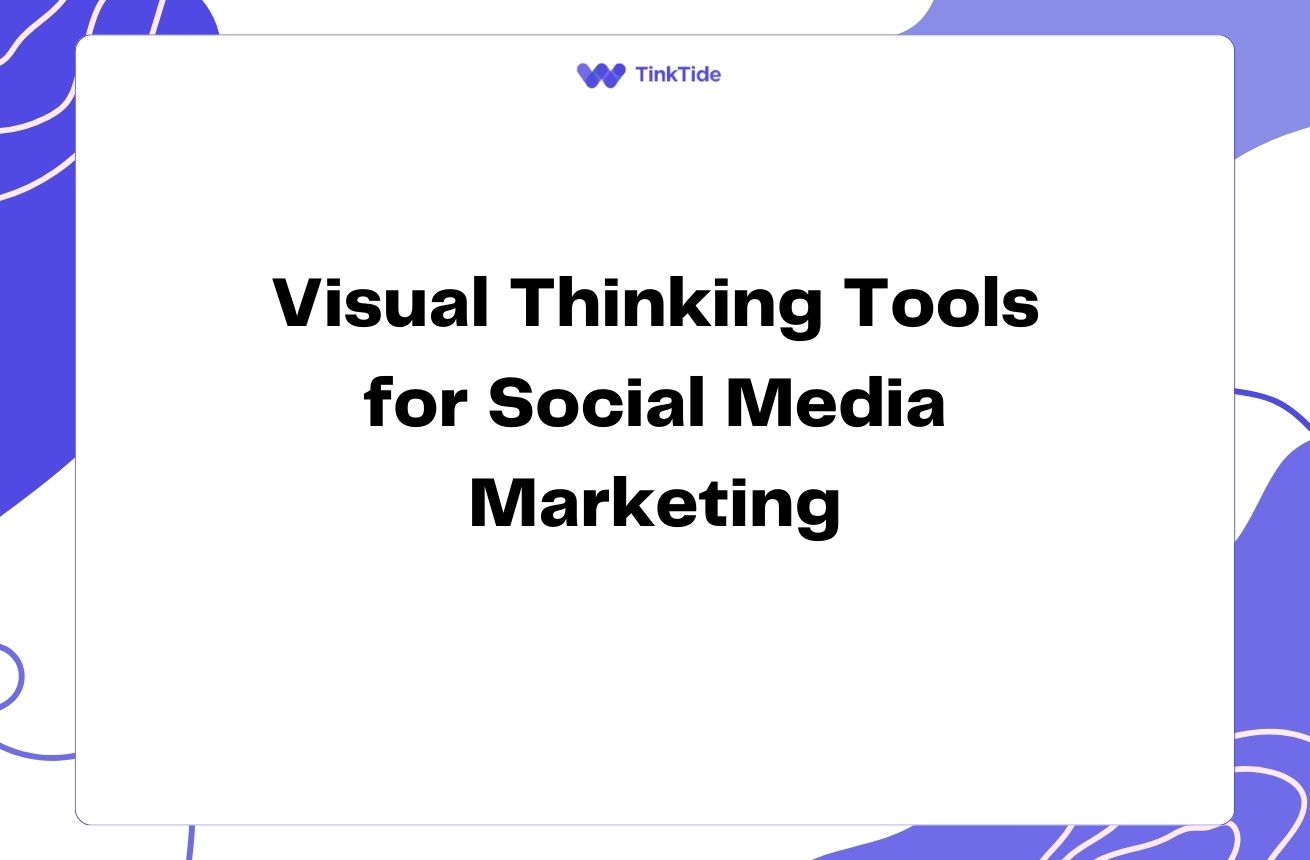Boost Your Marketing Presentations with Visual Thinking
The Power of Visual Thinking in Marketing
In today's fast-paced business world, capturing and maintaining your audience's attention is crucial. Visual thinking techniques can transform your marketing presentations from mundane to memorable. By leveraging the power of visuals, you can communicate complex ideas more effectively and leave a lasting impression on your audience.
Visual thinking involves using images, diagrams, and other visual elements to convey information and ideas. This approach taps into the brain's natural ability to process visual information quickly, making your presentations more engaging and easier to understand. According to a study by Levie and Lentz, visuals can improve learning by up to 400% compared to text alone.
By incorporating visual thinking techniques into your marketing presentations, you can simplify complex concepts, highlight key points, and create a more interactive and memorable experience for your audience. This approach not only enhances understanding but also increases retention of the information presented.
Key Visual Thinking Techniques for Marketing Presentations
To create more engaging and effective marketing presentations, consider incorporating these visual thinking techniques:
- Mind mapping: Organize ideas and show relationships between concepts
- Infographics: Present data and statistics in a visually appealing format
- Storyboarding: Create a visual narrative to guide your presentation
- Metaphor visualization: Use familiar images to explain abstract concepts
- Data visualization: Transform numbers into compelling charts and graphs
Mind Mapping for Structured Presentations
Mind mapping is a powerful visual thinking technique that can help you organize your thoughts and create a structured presentation. Start by placing your main topic in the center of a blank page or digital canvas. Then, branch out with subtopics and supporting ideas, using colors and icons to differentiate between concepts.
Tools like MindMeister or XMind can help you create digital mind maps easily. By presenting your mind map at the beginning of your presentation, you give your audience a clear overview of what to expect, making it easier for them to follow along and retain information.
Mind mapping can also help you identify connections between different aspects of your marketing strategy, leading to more cohesive and compelling presentations. Use this technique to brainstorm ideas, plan your content, and create a logical flow for your presentation.
Infographics: Turning Data into Visual Stories
Infographics are an excellent way to present complex data and statistics in a visually appealing and easily digestible format. They combine text, images, and design elements to tell a story or explain a concept. In marketing presentations, infographics can be particularly effective for showcasing market trends, customer demographics, or product comparisons.
To create compelling infographics, focus on simplicity and clarity. Use a consistent color scheme and typography that aligns with your brand. Tools like Canva or Piktochart offer templates and design elements to help you create professional-looking infographics even if you're not a designer.
When presenting infographics, consider using animation or progressive reveal techniques to guide your audience through the information. This approach helps prevent information overload and keeps your audience engaged throughout the presentation.
Storyboarding: Crafting a Visual Narrative
Storyboarding is a technique borrowed from the film industry that can significantly enhance your marketing presentations. By creating a visual narrative, you can guide your audience through your content in a more engaging and memorable way. Start by outlining the key points of your presentation, then create a series of visual frames that represent each section.
Use tools like StoryboardThat or Boords to create digital storyboards. Each frame should include a rough sketch or image representing the main idea, along with brief notes about the content. This visual outline helps you maintain a logical flow and ensures that your presentation tells a cohesive story.
When presenting, use your storyboard as a guide to transition smoothly between topics. This technique is particularly effective for product launches, case studies, or explaining complex marketing strategies, as it helps your audience follow the narrative arc of your presentation.
Implementing Visual Thinking in Your Presentations
To effectively implement visual thinking techniques in your marketing presentations, follow these steps:
- Analyze your content: Identify key points and data that can be visualized
- Choose appropriate techniques: Select visual thinking methods that best suit your content
- Create rough drafts: Sketch out your ideas before moving to digital tools
- Use professional tools: Leverage software designed for creating visual content
- Practice and refine: Rehearse your presentation and gather feedback to improve
Overcoming Common Challenges
While visual thinking can greatly enhance your marketing presentations, there are some challenges you might face. One common issue is the temptation to overload slides with too much visual information. Remember that the goal is to simplify and clarify, not to complicate. Stick to one main idea per slide and use visuals to support, not overwhelm, your message.
Another challenge is maintaining consistency across your presentation. Establish a visual style guide that includes your color palette, typography, and icon style. This ensures a cohesive look that reinforces your brand identity throughout the presentation.
Lastly, be mindful of your audience's visual literacy. While most people respond well to visual content, some may prefer more traditional formats. Be prepared to provide alternative explanations or handouts to accommodate different learning styles.
Address common questions
Here are some frequently asked questions about using visual thinking in marketing presentations:
How can I create professional-looking visuals without design skills?
Utilize user-friendly tools like Canva, Piktochart, or Visme that offer templates and drag-and-drop interfaces. These platforms provide a wide range of pre-designed elements that you can customize to fit your needs. Additionally, consider taking online courses in basic design principles to improve your skills over time.
What's the ideal ratio of text to visuals in a presentation?
While there's no strict rule, a good guideline is the 80/20 principle: aim for 80% visuals and 20% text. This ratio ensures your slides are visually engaging without being overwhelming. Remember, your verbal presentation should provide context and details, while the visuals support and enhance your message.
How can I ensure my visuals are accessible to all audience members?
Consider color blindness by using high-contrast color combinations and avoiding red-green pairings. Include alt text for images in digital presentations. Use clear, legible fonts and ensure text is large enough to read from a distance. Provide handouts or digital copies of your presentation for those who may need to review the information later.
What types of visuals work best for data-heavy presentations?
For data-heavy presentations, focus on data visualization techniques such as bar charts, line graphs, pie charts, and infographics. Tools like Tableau or Google Data Studio can help create interactive data visualizations. Break complex data sets into smaller, more digestible chunks, and use color coding to highlight trends or important points.
How can I incorporate visual thinking techniques in virtual presentations?
For virtual presentations, use digital whiteboarding tools like Miro or Mural for real-time collaboration and visual brainstorming. Leverage screen sharing to guide your audience through visual elements. Consider using animated transitions or progressive reveal techniques to maintain engagement. Interactive elements like polls or quizzes can also add a visual and engaging component to virtual presentations.
How often should I update my visual content in recurring presentations?
Regularly refresh your visual content to keep recurring presentations engaging. Update data visualizations with the latest figures, incorporate new case studies or examples, and align visuals with current design trends. Aim to review and update your visual content at least quarterly, or more frequently if your industry or market changes rapidly.
Provide additional resources
The Visual MBA
A book that applies visual thinking to business concepts
Presentation Zen
Blog and books on creating engaging presentations
Information is Beautiful
Inspiration for data visualization and infographics
Duarte Design
Resources and training on presentation design and storytelling
Visually
Platform for custom visual content creation
Summarize key takeaways
Visual thinking techniques can significantly enhance your marketing presentations, making them more engaging, memorable, and effective. By incorporating mind mapping, infographics, storyboarding, and other visual elements, you can simplify complex ideas, highlight key points, and create a more interactive experience for your audience.
Remember to balance visual elements with clear, concise messaging, and always keep your audience's needs in mind. With practice and refinement, you can master the art of visual thinking in your marketing presentations, leading to better engagement and more successful outcomes.
Start implementing these techniques in your next presentation and observe the positive impact on your audience's engagement and retention. Continuously seek feedback and refine your approach to visual thinking to stay ahead in the competitive world of marketing communications.
Elevate Your Marketing Presentations Today
Ready to transform your marketing presentations? Start your free trial and access powerful visual thinking tools.
Start Your Free Trial

